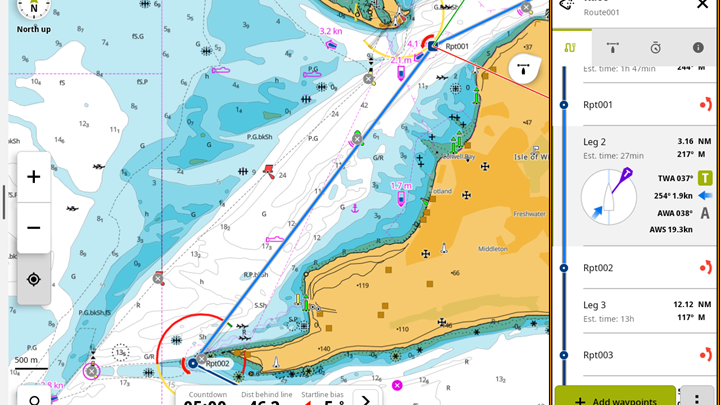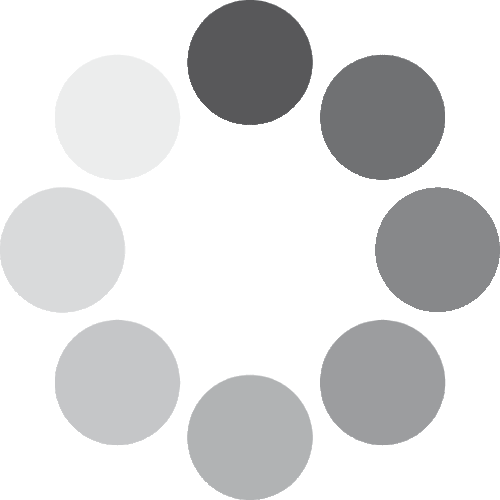The Round the Island race is one of the highlights of the racing calendar, attracting everyone from family cruisers to grand prix racers in a spectacle of sail. Key to a successful race is getting a good start, and here anyone can benefit from B&G’s grand-prix level technology. Existing Vulcan and Zeus3 customers can read a guide here, but read on to find out how our latest sailing processors and chartplotters can combine to give you all the data you need to get best chance of nailing the start.
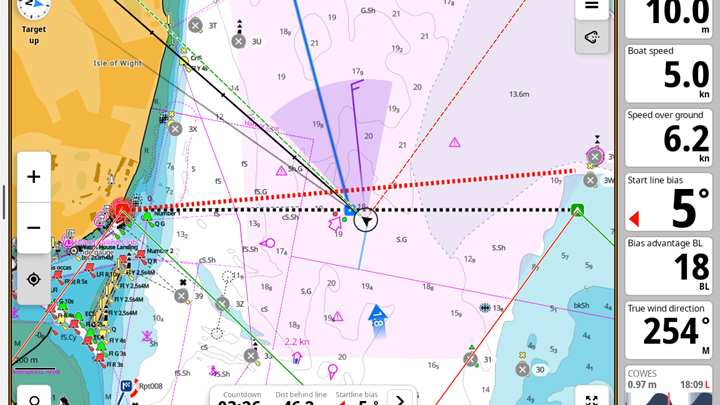

Setting the startline

The sailing instructions state:
The starting line is formed by bringing the RYS FLAGSTAFF into line with the white line on the ORANGE DIAMOND ON THE CASTLE. Vertical light beams are installed at the RYS to identify the starting line transit.
The outer distance starting mark (ODM) will be a Committee Vessel, displaying an ISC burgee, attached to the Williams Shipping Buoy, which may not lie on the starting line. In the unlikely event of the Committee Vessel not being attached, the ODM will be the Williams Shipping Buoy.
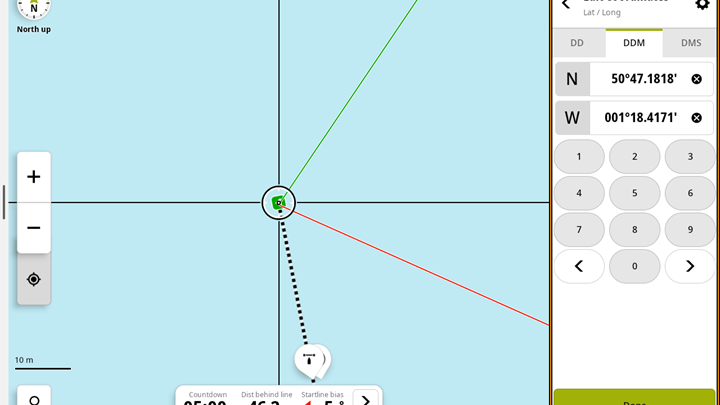

The starboard end is on a bearing - The Sailing Instructions give a bearing of the line of 169° true. Williams Shipping buoy is the outer distance mark, but may not be exactly on the line – but the range between the flagpole and the buoy is 1.2nm.
Enter the starboard end of the line in position 50° 47.1818N, 001° 18.4171W and
that’s both ends of the line now placed.
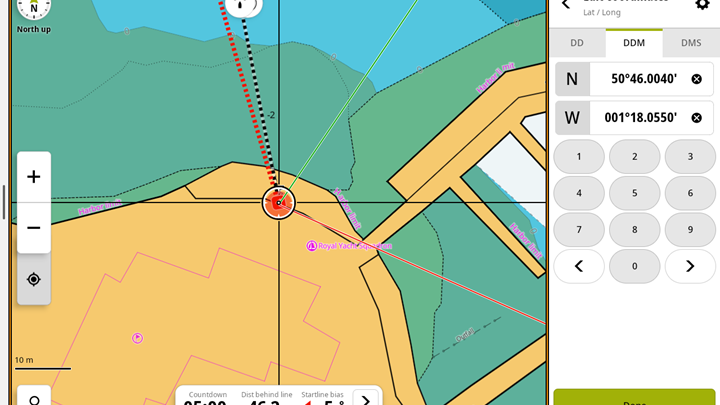
The Port end of the line is located at the Royal Yacht Squadron flagstaff, in position 50° 46.004N, 001° 18.055W. You can select ‘place on chart’ on a ZeusS/SR MFD and enter this lat/long in the menu, or add this as a waypoint and choose ‘set at waypoint.
Race timer – set GPS start time
The outer distance starting mark (ODM) will be a Committee Vessel, displaying an ISC burgee, attached to the Williams Shipping Buoy, which may not lie on the starting line. In the unlikely event of the Committee Vessel not being attached, the ODM will be the Williams Shipping Buoy.
Time to Burn
If you have a B&G sailing processor – Triton Edge, Hercules or Hercules WTP, you can take advantage of our grand-prix level starting algorithms – namely Time to Burn. This gives a constantly updated value that shows you whether you are early or late for the start, and how much time you have to burn, to enable you to hit the line at maximum speed just as the gun fires.
This can now be displayed on Triton2/H5000 Graphic displays (software update is available here), on the Sailing processor webserver, and on ZeusS and ZeusSR MFDs (2.1 software update required – link here) to ensure that you get the best start possible
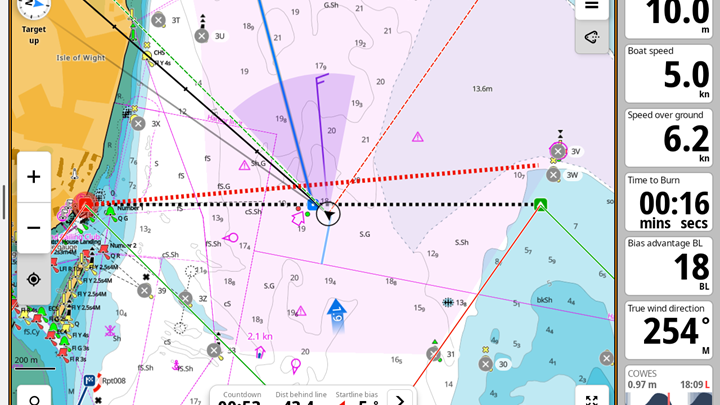

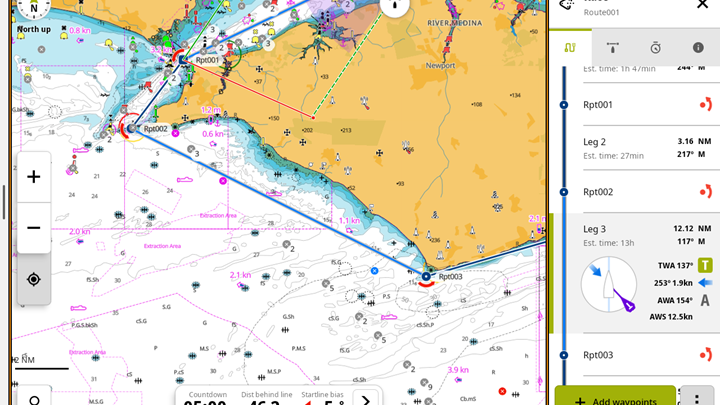

Laylines
Laylines are displayed from either end of the startline, which will give you a good idea of the optimum tack or gybe angles in relation to the startline. Tap the startline marker on the screen and the chart display will orientate to show the startline perpendicular to the screen and scale to show both line and your vessel, which can really aid your situational awareness.
Leg inspector
With the race panel open and your route loaded, our new chartplotters will give you all the info you need. You can step through the race route, inspecting each leg in turn and it will give you wind and tidal info for each one. Check the next leg as you progress around the course and get valuable information on wind angles and tide vectors, to make sure you’re as prepared as you can be for the next leg.
